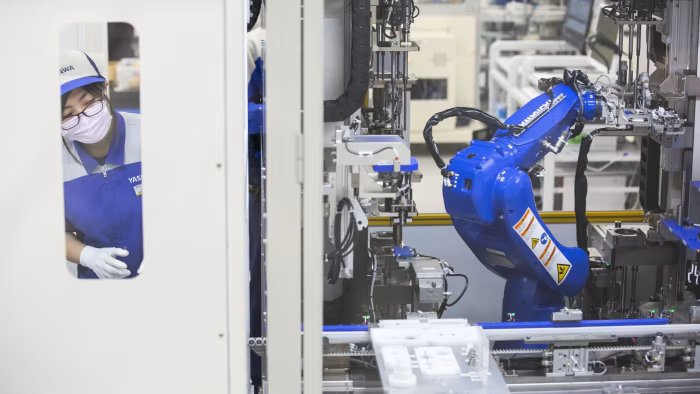The writer is head of Pictet Research Institute
Research on demographics mostly looks at the perils of a shrinking labour force on economic growth but ignores what automation and artificial intelligence does for productivity. Likewise, research on automation and AI focuses on jobs that may be lost, but overlooks the demographic issues they may solve. Put the two together — ageing populations with automation/AI — and there are clusters of investment opportunity.
We all know that advanced economies face a rise in dependency ratios — the number of retirees to workers. By 2080, China is expected to have more people over 65 than aged 15 to 65. Happily, as these demographic pressures increase, automation technology and AI is beginning to reshape productivity.
Yet, investors need to note that the process will not happen everywhere, or in every sector. Three factors need to align. A sector or industry must benefit from ageing populations. It needs to be one where AI and robotics can drive productivity. And it must be in a territory with the digital and physical capacity to scale technology.
Housing fits the bill. People spend more on housing as they get older, especially on adapted living. Housing is conducive to technology, in both the production of construction materials as well as the AI and robotics-related technology used to make housing suitable to older households.
Likewise, healthcare. Already a leader in AI adoption, healthcare sees demand for diagnostics, medical devices and longevity-related products. Healthcare has been at the forefront of innovation for years and is an early adopter of robotics and AI. With ageing populations that live longer, investment opportunities will extend beyond pharmaceuticals and medical devices into areas that prolong healthy years of life.
The food sector, also, is one promising investment area. It has inelastic demand, but is amenable to automation and AI, both in production and during processing and packaging. As populations age they spend more on food.
There are losers, too. Sectors that are likely to see decreased demand because of population ageing, and that are not conducive to automation and AI. Clothing and the transportation of people stand out. Older populations spend less on these, and the benefits to come from automation and AI are fewer.
And the countries best equipped to harvest the fruits of these technologies? Remember that automation typically moves through two phases. First comes substitution, robots and systems that take over tasks previously done by humans. Then comes productivity enhancement, technologies that improve efficiency, quality and competitiveness. The latter requires deeper investment in training, data infrastructure and organisational redesign, but offers greater returns.
Robots make a difference: data on Germany from the Institute for Employment Research suggests each additional robot per 1,000 workers contributes 0.54 percentage points to productivity growth over a decade.
Japan has a head start. It faced labour shortages as long ago as the 1990s and embraced automation since then. It still leads the world in robot density in the basic metals and machinery industry with about 30 robots per 1,000 sector workers, according to our estimates using International Federation of Robotics data. But China is scaling up rapidly, with robot density in the sector rising from 1 to nearly 10 per 1,000 workers in a decade. The US is investing in AI across healthcare, logistics and advanced manufacturing. Europe is lagging behind in automation, despite its ageing population. Germany still uses nearly 40 per cent of its robots for labour substitution, compared with 34 per cent in the US.
The history of technology adoption gives insight into how far off AI is from its maximum economic impact. Take the introduction of electricity, or the internet. These technologies differ markedly but share a common trajectory: each began as an elusive frontier technology before institutional alignment, cost reduction and skills acquisition converged to turn them into the foundational infrastructure of production. AI today is in the early scaling phase. But signs of wider usage are emerging. In radiology applications, human-AI systems are enhancing diagnostic accuracy; distribution centres employing vision-guided technologies are achieving double-digit increases in picking speed; conversational agents are managing routine banking inquiries.
The dynamics of demographics and technology mean investors should look for sectors that serve ageing populations, that are conducive to automation, in geographies with infrastructure to support AI and robotics. And avoid broad sector or country bets.





